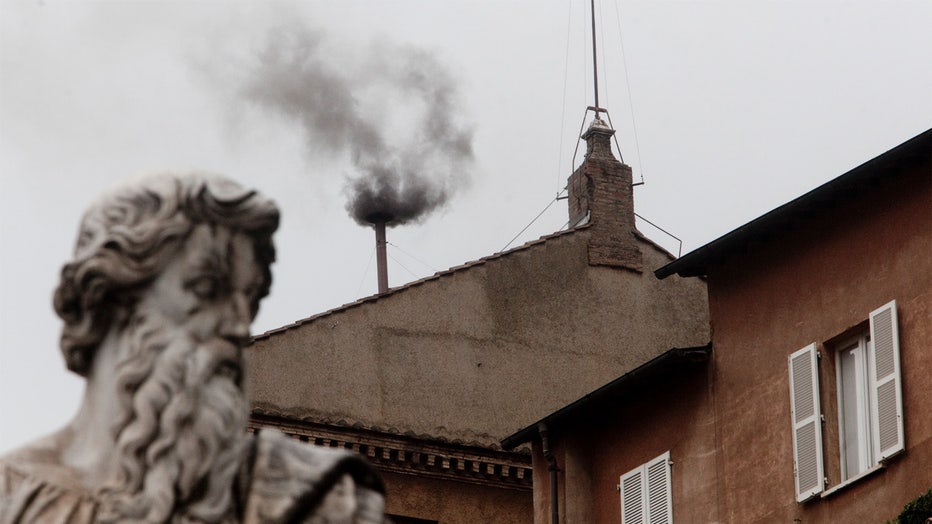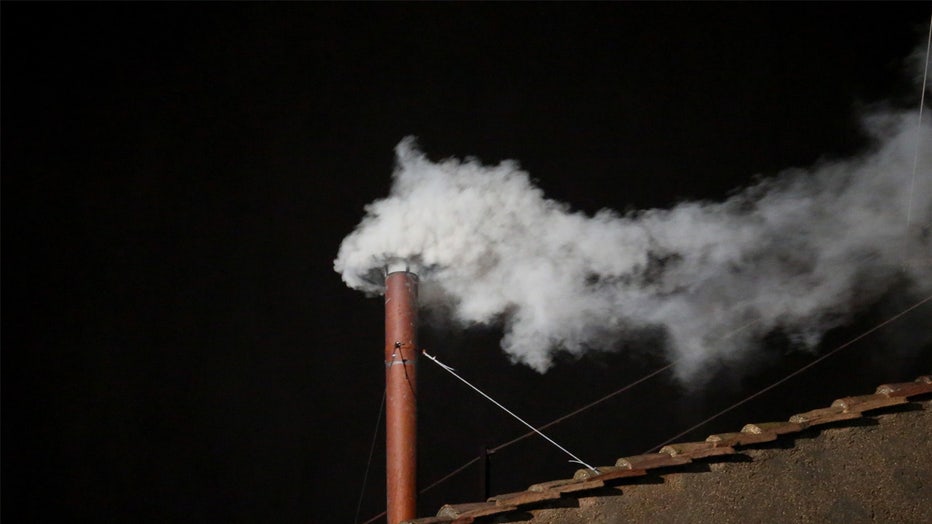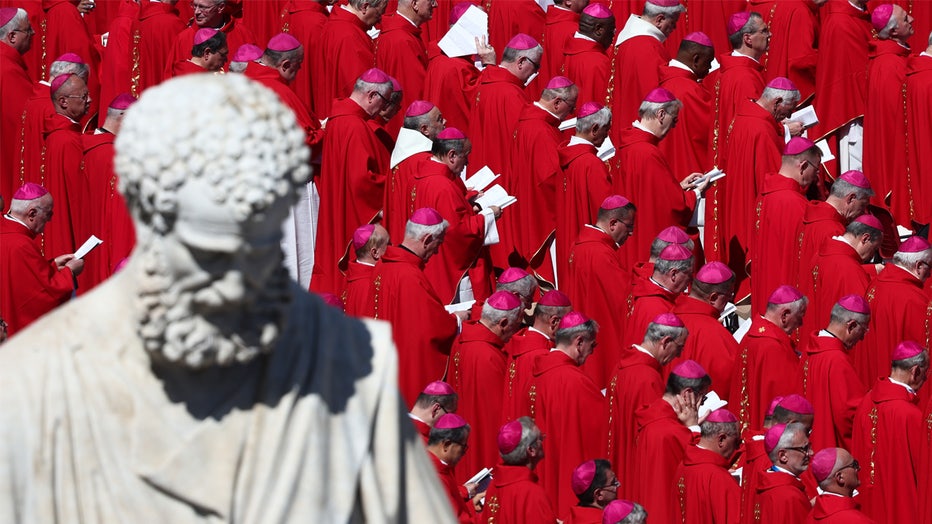LIVE l How to watch the Vatican during papal conclave: 24/7 cam
VATICAN CITY - Black smoke billowed from the Sistine Chapel on Wednesday afternoon, indicating that the cardinals had not yet reached the two-thirds majority needed to elect a new pope.
This is a breaking news update. Watch live coverage in the media player above and stay with FOX 5 NY for updates.
JUMP TO: SCHEDULE OF EVENTS l WHAT THE SMOKE MEANS
Conclave live stream
***FOX 5 NY will have a 24/7 LIVE look at the Sistine Chapel in Vatican City as cardinal electors hold a conclave to elect Pope Francis' successor. You can watch in the YouTube player above.
Ballots are burned at the end of each voting session – black smoke from the Sistine Chapel chimney means no decision, while smoke indicates that a new pope has been chosen.
Papal conclave schedule of events
All 133 cardinal electors will attend a Eucharistic celebration in the morning, according to Vatican News. In the afternoon, electors will head to the Sistine Chapel where they will take an oath of secrecy.
Following the oath, the Master of Pontifical Liturgical Celebrations will deliver a meditation. During this time, electors can reflect on the importance of choosing their new pontiff.
- MORE: Conclave schedule: How the Catholic church picks a new pope
- MORE: White smoke vs. black smoke: What it means for the pope
- MORE: The pope’s regnal name: What it is and why it matters
- MORE: How do religions choose their leaders? What to know
Prayers are recited and anyone with last-minute questions are permitted to ask them at this point. Once electors are clear on the procedures and rules, the election process starts.

Conclave to elect next pope begins
The College of Cardinals will begin the secretive voting process of choosing a new pope. FOX 5 NY's Robert Moses has the story.
For more information on the process, and what comes next after electing a new pope, click HERE.
White smoke vs. black smoke: What it means
All eyes are on the copper chimney of the Sistine Chapel.
The release of black smoke from the Sistine Chapel signals that the cardinals voting to choose the new pope have not yet reached the two-thirds majority needed to secure a decision.

Black smoke billows out from a chimney on the roof of the Sistine Chapel indicating that the College of Cardinals have failed to elect a new Pope on March during the second day of the Conclave,at Vatican. Pope Benedict XVI's successor is being chosen
The College of Cardinals will cast as many as four ballots in a single day for the next pope. After each vote, the ballots are burned and smoke is released from the chapel’s chimney as a signal to the throngs holding vigil in St. Peter's Square.
Simply put, black smoke, or umata nera in Italian, indicates that no pope has been elected, while white smoke, or fumata bianca, will indicate that the cardinals have chosen the next head of the Catholic Church.

VATICAN CITY, VATICAN - MARCH 13: White smoke is seen from the roof of the Sistine Chapel indicating that the College of Cardinals have elected a new Pope on March 13, 2013 in Vatican City, Vatican. Pope Benedict XVI's successor - the 266th Pontiff -
If three days pass with no pope elected, voting can be suspended for a day to allow the cardinals time for reflection before the next round of ballots are cast.
When does the conclave start?
The backstory:
By tradition, the conclave must begin 15–20 days after the death or resignation of the pope. Francis died on Monday, April 21.
Big picture view:
The College of Cardinals that will elect a new pope includes members from far corners of the globe whom Francis named over his 12-year papacy to bring in new points of view of the Catholic Church hierarchy.

Saint Peter's statue and cardinals during the funeral ceremony of Pope Francis at Saint Peter's Square in Vatican on April 26, 2025. (Photo by Jakub Porzycki/NurPhoto via Getty Images)
Many have spent little or no time in Rome getting to know their colleagues, injecting some uncertainty into a process that requires two-thirds of the voting-age cardinals to coalesce behind a single candidate.
There are a total of 135 cardinal electors — 108 of whom were appointed by Francis — and the last 20 were appointed in early December. Only cardinals under 80 are eligible to vote, and it is not clear how many of the 135 will participate.

